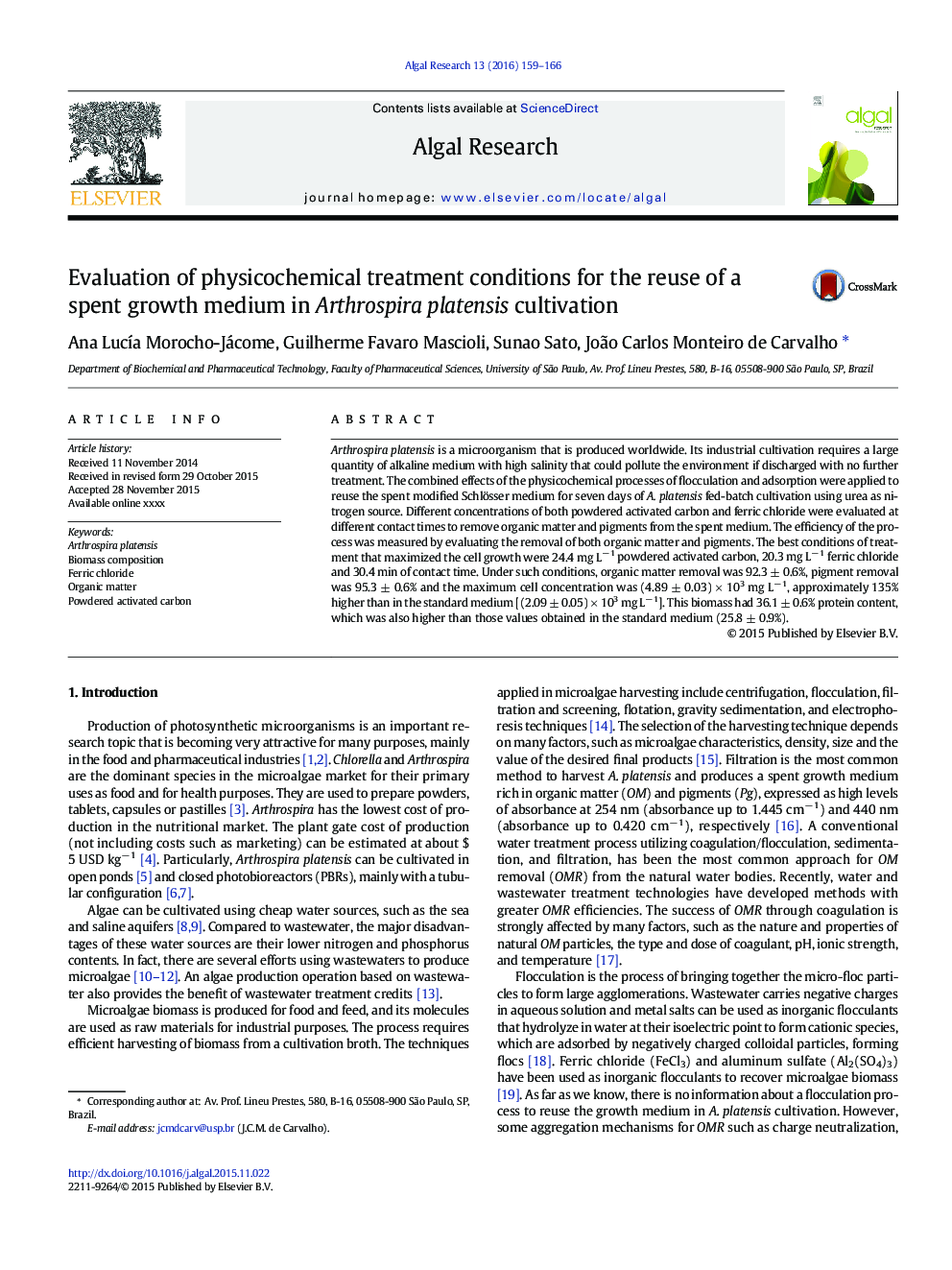| Article ID | Journal | Published Year | Pages | File Type |
|---|---|---|---|---|
| 8087572 | Algal Research | 2016 | 8 Pages |
Abstract
Arthrospira platensis is a microorganism that is produced worldwide. Its industrial cultivation requires a large quantity of alkaline medium with high salinity that could pollute the environment if discharged with no further treatment. The combined effects of the physicochemical processes of flocculation and adsorption were applied to reuse the spent modified Schlösser medium for seven days of A. platensis fed-batch cultivation using urea as nitrogen source. Different concentrations of both powdered activated carbon and ferric chloride were evaluated at different contact times to remove organic matter and pigments from the spent medium. The efficiency of the process was measured by evaluating the removal of both organic matter and pigments. The best conditions of treatment that maximized the cell growth were 24.4 mg Lâ 1 powdered activated carbon, 20.3 mg Lâ 1 ferric chloride and 30.4 min of contact time. Under such conditions, organic matter removal was 92.3 ± 0.6%, pigment removal was 95.3 ± 0.6% and the maximum cell concentration was (4.89 ± 0.03) Ã 103 mg Lâ 1, approximately 135% higher than in the standard medium [(2.09 ± 0.05) Ã 103 mg Lâ 1]. This biomass had 36.1 ± 0.6% protein content, which was also higher than those values obtained in the standard medium (25.8 ± 0.9%).
Keywords
Related Topics
Physical Sciences and Engineering
Energy
Renewable Energy, Sustainability and the Environment
Authors
Ana LucÃa Morocho-Jácome, Guilherme Favaro Mascioli, Sunao Sato, João Carlos Monteiro de Carvalho,
